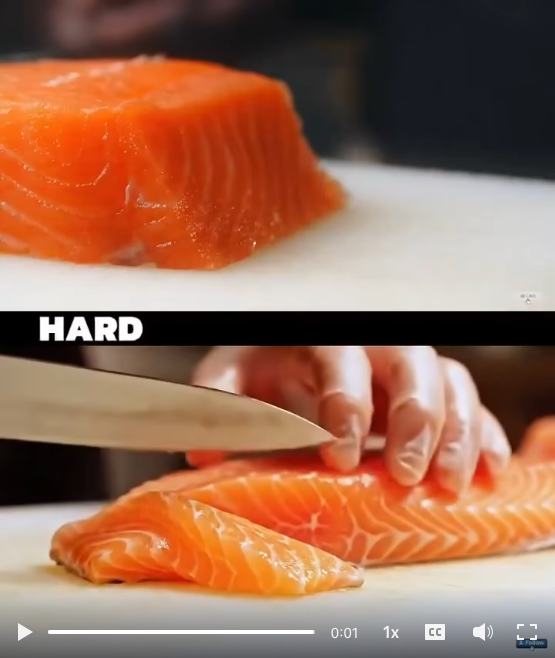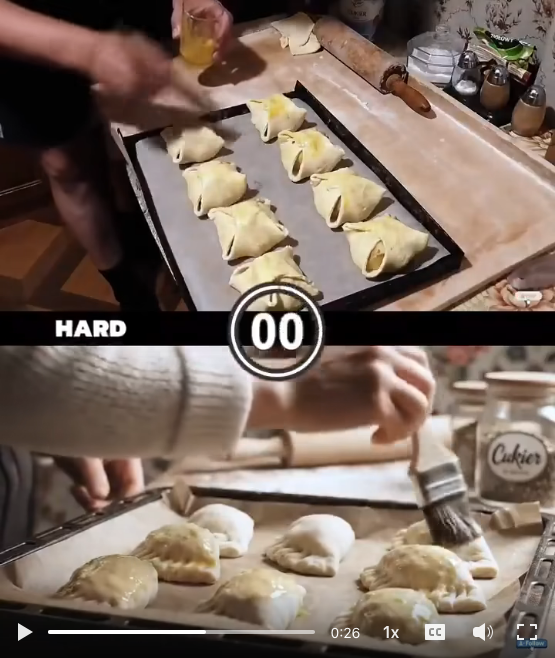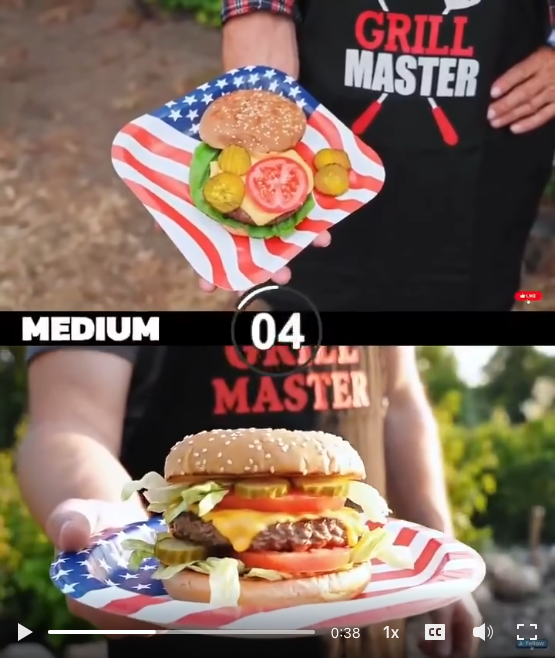AI Content Marketing for Food Brands: The Future of Food and Beverage CPG Brands and Restaurants
As we step into the end of 2025, the intersection of artificial intelligence (AI) and content marketing is reshaping the landscape for food and beverage (F&B) consumer packaged goods (CPG) brands and food service industries. The question on everyone’s mind is not just whether AI can replace humans in content marketing, but how it will transform the industry, what it means for creatives and producers, and what brands should embrace or avoid. In this article, I will elaborate on my observations and delve into these dynamics, with a focus on F&B CPG brands and restaurants, and offer a roadmap for navigating this evolving terrain.
The Rise of AI Content Marketing for Food Brands
AI’s capabilities in content marketing have expanded dramatically. From generating hyper-realistic food preparation videos to crafting personalized brand marketing campaigns, AI is no longer a futuristic concept but a present-day reality. For F&B CPG brands and restaurants, AI offers tools that can analyze consumer data, predict trends, and create content at scale. For instance, AI can produce thousands of personalized ad variants, such as “Fresh Organic Smoothies in Chicago” or “Vegan Snacks for Fitness Enthusiasts,” without overwhelming marketing teams (SurgeGrowth, 2025). This level of customization is particularly crucial in an industry where consumer expectations for personalized experiences are at an all-time high.
Moreover, AI’s ability to generate visual content, such as food preparation videos, is becoming indistinguishable from human-created content. A recent X post by @interesting_aIl highlighted this trend, challenging viewers to spot the difference between AI-generated and real food prep scenes. The precision of AI in mimicking human actions, from chopping salmon to arranging a thali, underscores its potential to dominate not only social media user-generated content (UGC) like videos but also commercial food videos and TV advertising. This raises a critical question: Is AI the future of content marketing for F&B CPG brands and restaurants?
Implications for Creatives and Producers
For creatives and producers in the F&B industry, the rise of AI presents both opportunities and threats. On one hand, AI can amplify creativity by handling repetitive tasks, allowing human creatives to focus on strategic and innovative aspects of content creation. For example, AI-assisted tools can generate social media posts, captions, and visuals, speeding up the process without sacrificing quality (We Are Food, 2025). This can be a game-changer for producers who often work under tight deadlines.
However, the threat lies in the potential displacement of human roles. As AI becomes more adept at producing high-quality content, the demand for traditional creative roles may diminish. Producers and photographers, like the one who spotted 97% of AI-generated content correctly in the X video, may find their skills increasingly specialized to areas where AI still falls short, such as capturing the nuanced, messy reality of cooking that resonates with audiences. The key for creatives is to leverage AI as a tool rather than a replacement, focusing on areas where human intuition and emotion add value that AI cannot replicate.
The AI visual-making capacity is there, and you won’t need the gear anymore but software. The art now will be in creating compelling, highly detailed prompts. The prompter with the best knowledge of commercial food advertising and creative imagination, along with verbal skills and the ability to edit the pieces into a cohesive story, will be the winner.
Implications for Brands: AI-Generated Content for Restaurants
For F&B CPG brands and restaurants, AI offers a double-edged sword. On the positive side, AI can enhance brand engagement through personalized, data-driven marketing strategies. Research shows that 78% of consumers are more likely to purchase from brands that personalize their marketing experiences (SurgeGrowth, 2025). AI can analyze consumer behavior in real-time, delivering targeted promotions that increase repeat visits and strengthen brand affinity (Omnivore, 2025). This is particularly relevant for restaurants, where anticipating diner preferences can lead to higher customer loyalty.
However, brands must be cautious about over-reliance on AI. The authenticity that comes from human-created content, especially in the F&B sector, is irreplaceable. Consumers are quick to identify and reject “greenwashing” attempts or content that feels too polished and detached from reality. Brands must ensure that AI-generated content aligns with the principles of effective content and consumers’ core values and resonates with their audience’s expectations for genuineness. Transparent communication about sourcing and production practices, backed by genuine sustainability initiatives, is crucial (SurgeGrowth, 2025).

Licensing Issues for AI-Generated Content: Copyright and Legal Implications
The ability to copyright AI-generated content and the legal implications for established legacy brands and emerging brands are critical considerations. In the United States, the U.S. Copyright Office has confirmed that the use of AI to assist in the process of creation or the inclusion of AI-generated material in a larger human-generated work does not bar copyrightability (NewsNet Issue 1060, 2025). However, the ownership of intellectual property (IP) rights in purely AI-generated content remains a gray area. The Copyright Office’s stance is that copyright protection is only available for works that are created by a human author, not by AI alone (U.S. Copyright Office, 2025). This means that for AI-generated content to be copyrightable, there must be a significant human contribution to the creative process.
For established legacy brands, this poses a challenge. These brands often rely on a long history of human-created content that carries significant brand equity. If they adopt AI-generated content without ensuring human involvement, they risk losing copyright protection for that content. This could lead to legal disputes if competitors or other entities use similar AI-generated content without permission. Moreover, legacy brands must consider the potential for consumer backlash if AI-generated content is perceived as inauthentic or lacking the human touch that has historically defined their brand identity.
Emerging brands, on the other hand, may see AI-generated content as an opportunity to scale quickly and compete with larger players. However, they must navigate the legal landscape carefully. Without copyright protection for purely AI-generated content, emerging brands could find themselves vulnerable to imitation by others who use similar AI tools. To mitigate this risk, emerging brands should ensure that their AI-generated content includes a clear human element, such as creative direction or editing, to secure copyright protection. Additionally, they should consider licensing agreements that explicitly address the use of AI tools and the ownership of resulting content.
The legal framework surrounding AI-generated content is still evolving, with jurisdictions like the EU, UK, and China implementing regulatory regimes (ICAEW, 2025). Brands must stay informed about these developments and ensure compliance with relevant laws. For instance, the EU’s AI Act, effective in 2025, includes provisions for transparency in AI-generated content, which could impact how brands license and use such content (European Commission, 2025). Brands should avoid inputting confidential information or personal data into AI tools to mitigate risks associated with data privacy and security (ICAEW, 2025).

What to Look For and What to Avoid
What to Look For:
- Personalization at Scale: AI’s ability to create thousands of personalized ad variants can significantly enhance marketing campaigns. Look for tools that can tailor content to specific demographics, preferences, and locations.
- Efficiency and Speed: AI can streamline content production, reducing time-to-market for campaigns. This is particularly beneficial for F&B CPG brands launching seasonal products or restaurants promoting limited-time offers.
- Data-Driven Insights: Leverage AI to analyze consumer data and predict trends. This can inform content strategies that are more likely to resonate with target audiences.
- Augmentation, Not Replacement: Use AI to augment human creativity, not replace it. Focus on areas where AI can handle repetitive tasks, allowing human creatives to focus on strategic and emotional aspects of content.
What to Avoid:
- Over-Polarization: Avoid relying solely on AI-generated content that lacks the human touch. The messy, real-life aspects of cooking and dining can create a stronger emotional connection with audiences.
- Lack of Transparency: Do not use AI to create content that misrepresents your brand’s values or practices. Consumers value authenticity, and any perceived deception can damage trust.
- Neglecting Human Creativity: Avoid undervaluing the role of human creatives. While AI can produce content quickly, human intuition and emotion are critical for crafting narratives that resonate deeply.
- Ignoring Ethical Considerations: Be mindful of the ethical implications of AI, such as data privacy and the potential for bias in AI algorithms. Ensure that AI tools comply with regulations and respect consumer rights.
The Future of AI in F&B Marketing 2025
The future of content marketing in the F&B industry is likely to be a hybrid model, where AI and human creativity coexist. AI will handle the heavy lifting of data analysis, personalization, and content generation, while human creatives will focus on strategy, innovation, and emotional storytelling. For F&B CPG brands, this means leveraging AI to create efficient, targeted campaigns, while maintaining a connection to the authentic, human elements that consumers crave.
Restaurants, in particular, will benefit from AI’s ability to predict diner preferences and deliver personalized experiences. However, the tactile, communal nature of dining out will ensure that the human touch remains essential. The challenge for brands will be to balance the efficiency of AI with the authenticity of human interaction.
I believe at one point consumers will become immune to perfection, and new ideas will start emerging. As AI capacity progresses, a new type or style of content will emerge.

My Take
As we navigate the 2025 landscape, the question of whether AI will replace humans in content marketing is less about replacement and more about transformation. For F&B CPG brands and restaurants, AI offers unparalleled opportunities to engage consumers through personalized, data-driven content. However, the messy, human touch will always have a place in an industry where authenticity and emotion are paramount.
Creatives and producers must adapt by leveraging AI as a tool, focusing on areas where human skills shine. Brands should embrace AI’s efficiencies while avoiding the pitfalls of over-reliance and lack of transparency. The future is not about choosing between AI and human creativity but about finding the right balance to create content that is both innovative and genuine.
So, as you watch those flawless AI-generated food videos, remember: the real magic happens in the kitchen and in the human world, where products create emotions, spills, burns, and triumphs create authentic human stories that no algorithm can replicate.



